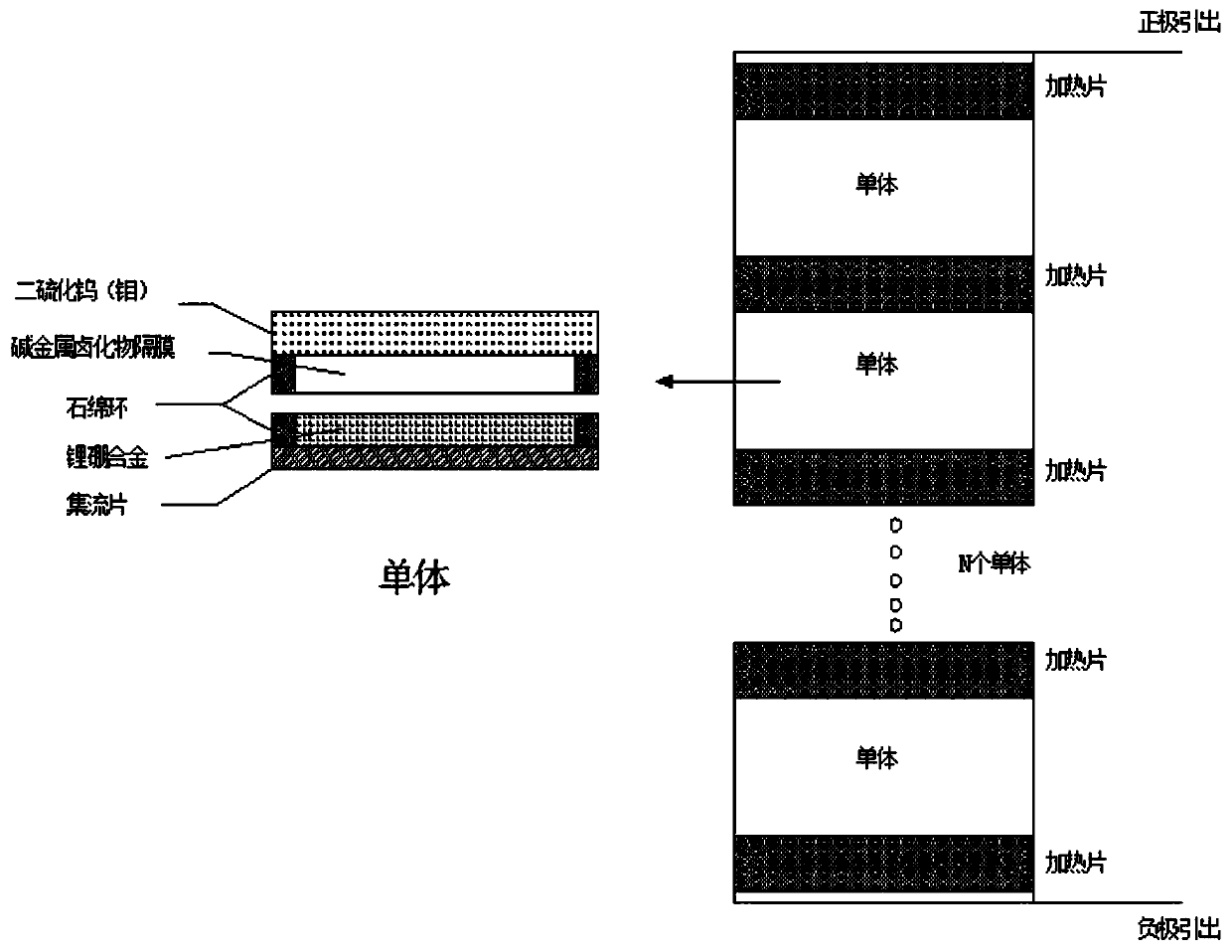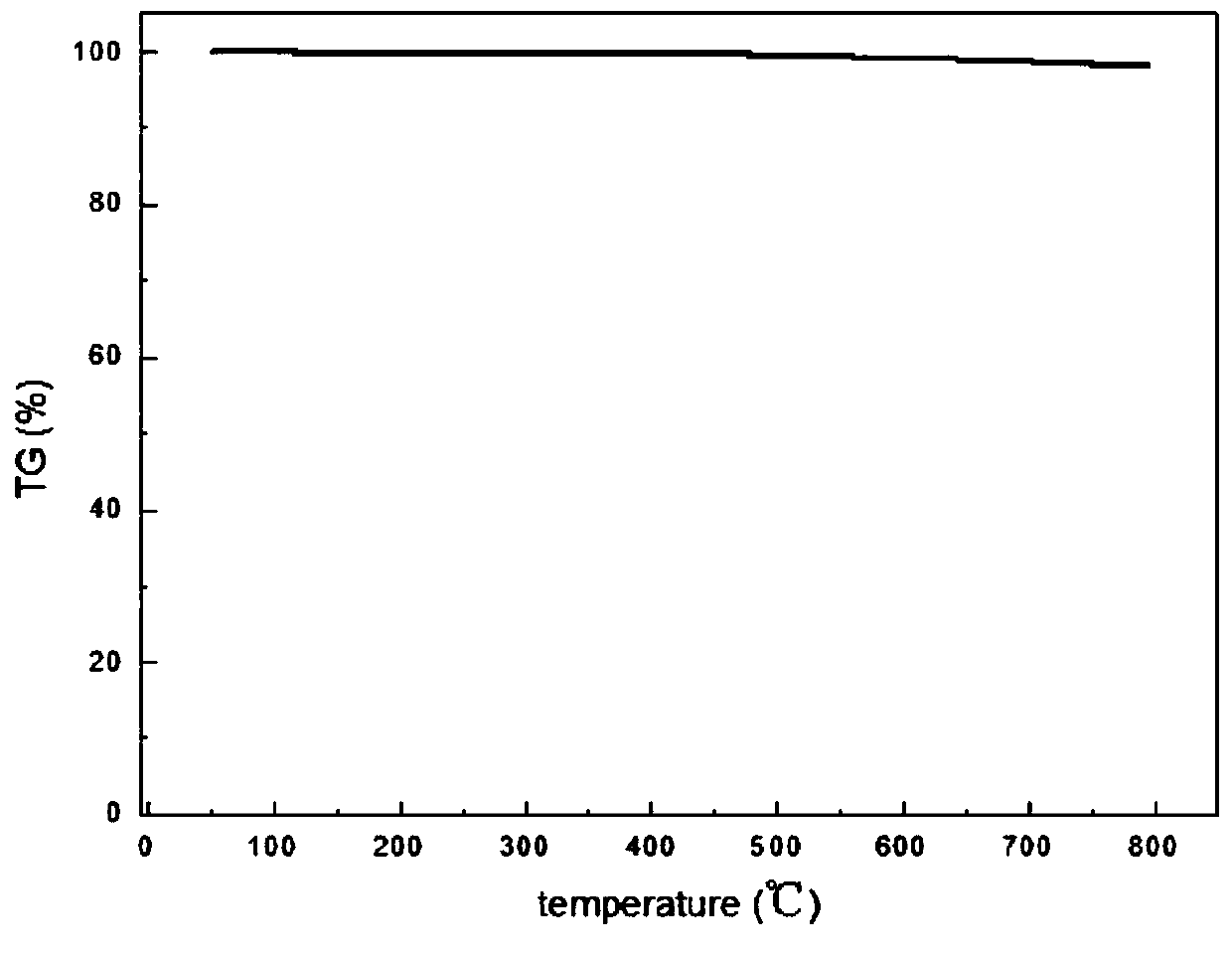Application of tungsten-molybdenum sulfide in thermal battery
A technology of sulfide and thermal batteries, applied in battery electrodes, circuits, electrical components, etc., can solve problems such as low decomposition temperature, low utilization rate of electrode materials, limited theoretical capacity of positive electrode materials, etc.
- Summary
- Abstract
- Description
- Claims
- Application Information
AI Technical Summary
Problems solved by technology
Method used
Image
Examples
Embodiment 2
[0078] Embodiment 2—using molybdenum disulfide as tungsten molybdenum sulfide
[0079] (1) High temperature roasting
[0080] Place molybdenum disulfide in a quartz tube furnace, pass through argon protective gas, heat it up to 850°C at a heating rate of 10°C / min, roast for 4 hours, cool to 60°C with the furnace, and pass through a 100-mesh sieve.
[0081] (2) Vacuum-atmosphere replacement roasting
[0082] Put the molybdenum disulfide after high-temperature roasting in step (1) into a vacuum roasting furnace, keep the pressure in the furnace at a vacuum of 0.015 MPa, raise the temperature to 600 °C at a heating rate of 10 °C / min, and roast for 1 hour. Slowly feed the equilibrium transfer gas to 0.1Mpa, after calcination for 0.5h, vacuumize and repeat the atmosphere replacement 5 times, and cool down with the furnace in a vacuum state to obtain a molybdenum disulfide sample. The equilibrium transfer gas is a mixed gas of water vapor and argon. The volume percentage of water ...
Embodiment 3
[0091] Embodiment 3—Using tungsten disulfide and molybdenum disulfide as tungsten molybdenum sulfide
[0092] (1) High temperature roasting
[0093] Place molybdenum disulfide and tungsten disulfide in a quartz tube furnace, pass through argon protective gas, raise the temperature to 850 °C at a heating rate of 10 °C / min, roast for 4 hours, cool to 60 °C with the furnace, and pass through 100 mesh sieve.
[0094](2) Vacuum-atmosphere replacement roasting Put the molybdenum disulfide and tungsten disulfide after step (1) high-temperature roasting into a vacuum roasting furnace. The temperature was raised to 600°C at a high speed, and after 1 hour of calcination, the equilibrium transfer gas was slowly introduced to 0.1Mpa. After 0.5 hour of calcination, the atmosphere was replaced by vacuuming for 5 times, and the molybdenum disulfide sample was obtained by cooling with the furnace in a vacuum state. The transfer gas is a mixed gas of water vapor and argon, and the volume per...
PUM
| Property | Measurement | Unit |
|---|---|---|
| particle size | aaaaa | aaaaa |
| decomposition temperature | aaaaa | aaaaa |
| decomposition temperature | aaaaa | aaaaa |
Abstract
Description
Claims
Application Information
 Login to View More
Login to View More - R&D
- Intellectual Property
- Life Sciences
- Materials
- Tech Scout
- Unparalleled Data Quality
- Higher Quality Content
- 60% Fewer Hallucinations
Browse by: Latest US Patents, China's latest patents, Technical Efficacy Thesaurus, Application Domain, Technology Topic, Popular Technical Reports.
© 2025 PatSnap. All rights reserved.Legal|Privacy policy|Modern Slavery Act Transparency Statement|Sitemap|About US| Contact US: help@patsnap.com



